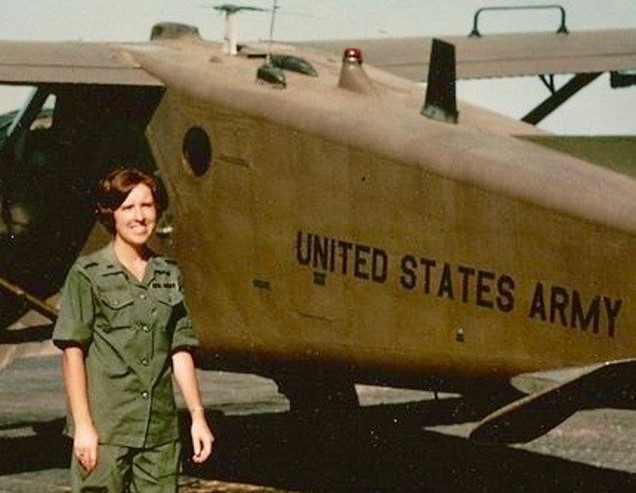Authors:
Historic Era: Era 10: Contemporary United States (1968 to the present)
Historic Theme:
Subject:
November/December 2024 | Volume 69, Issue 5


Authors:
Historic Era: Era 10: Contemporary United States (1968 to the present)
Historic Theme:
Subject:
November/December 2024 | Volume 69, Issue 5
Editor’s Note: Capt. Diane Carlson Evans served in the Army Nurse Corps in 1968 and 1969 in Vũng Tàu and Pleiku provinces, and is the author of Healing Wounds: A Vietnam War Combat Nurse’s 10-Year Fight to Win Women a Place of Honor in Washington, DC. She is founder and president of the Vietnam Women’s Memorial Foundation, and has received many honors for her long, difficult campaign to create the memorial to the 11,000 military and civilian women who served in Vietnam and the 265,000 who served around the world during the Vietnam era. All photographs courtesy of the author unless otherwise credited.

My plane touched down in Vietnam on August 2, 1968. The blast of heat and the smell of jet fuel and sewage hit me first, then the sight of GIs with M16s and bandoliers of ammunition slung across their strapping chests.
Three days later, after trading my skirt and heels for jungle fatigues and combat boots, I choppered to my ultimate destination, the 36th Evacuation Hospital in Vũng Tàu, a 400-bed evacuation hospital providing care to patients evac’ed from other in-country hospitals and casualties directly out of the field.
Once a French colonial town called Cap Saint-Jacques, Vũng Tàu was a seaside resort town with a backdrop of small mountains about seventy-seven miles east of Saigon. As the door gunner locked his eyes on the ground, I noticed the red crosses signifying U.S. military hospitals. Even if the Viet Cong weren’t great respecters of the off-limits status of hospitals featuring such designations, Vũng Tàu was considered one of the safer hospital locations relative to the 23 or so other U.S. Army medical outposts in Vietnam. White surf folded on nearby beaches that hemmed the South China Sea. Soldiers on R&R swam, drank beer, and tossed footballs back and forth.
That said, you quickly learned that even the relatively heavenly places in Vietnam could be tinted with a certain hell. On my first day in the sixty-bed unit the inside temperature was 105 degrees with no air conditioning, not even on the burn ward. Only the OR, ICU, and Recovery Room had this luxury. Huge floor fans chased around the fetid air. For me it didn’t matter, but it did for wounded GIs whose suffering was greatly compounded by the heat. They deserved better.
I was used to seeing trauma in Minnesota. But there it was explicable: farm mishaps, auto accidents, drownings, and homicides. In Vietnam, I was overwhelmed by the hundreds of our young soldiers, Vietnamese, and Montagnard civilians who wound up here for one of myriad medical or surgical reasons: bullets, shrapnel, booby-trapped grenades tripped by wires and fragmentation mines